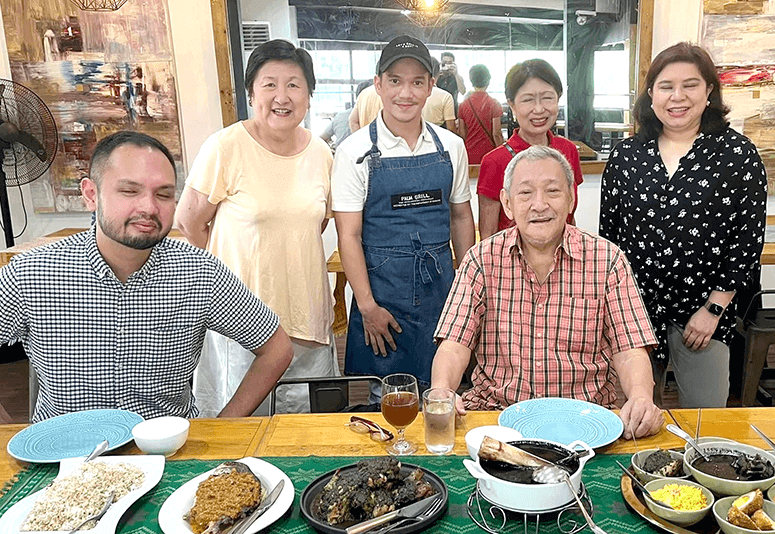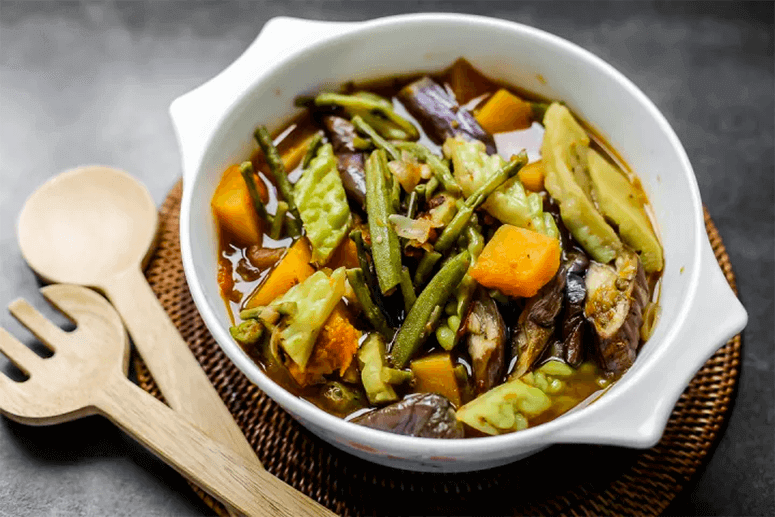Award-winning literature on the dining table
Deliberations for the 2022 Doreen Gamboa Fernandez (DGF) Food Writing Awards were conducted over an intriguing and much-appreciated lunch. Chaired by Micky Fenix, the judges for this 20th anniversary of the prestigious contest were Felice Prudente Sta. Maria, Nana Ozaeta, Mol Fernando, Datu Shariff Pendatun III and this writer.
We came up with four winners who had engaged with the theme “Roots, Fruits and Vegetables.” They will receive their prizes sometime in June, depending on when we finish the third book that features the winning essays after 10 years initially, then every five years.
First-prize winner Reynadel V. Cayetano of Quezon City wrote on “Reclaiming Philippine Ube.” A story producer for FEATR, The Fat Kid Inside Studios, Inc., he’s also a creative consultant and social media writer, as well as a story editor, scriptwriter, and head writer involved in TV production.

Here’s an excerpt from his prize-winning piece:
“… (I)t was 1613 when ube was mentioned in the first Tagalog and Spanish dictionary, but it was only in 1918 that the second earliest Philippine cookbook contained a recipe for ‘jalea de calabaza’ or pumpkin jam, which may have inspired ube halaya jam as we know it.
“Northern Philippines Root Crops Research and Training Center (NPRCRTC) Director Cynthia Kiswa shared that they’re focusing on four commercialized ube varieties: the Kinampay, Sampero, Zambal, and Mindoro. Each may be differentiated by their shape, color, aroma, and taste. Among the four, the Kinampay, which originated in Bohol, outdoes the other varieties in color, aroma, and slightly nutty, vanilla-like taste, hence, its reputation as the ‘Queen of Philippine Yams.’

“Ube figures prominently in the history of the Boholanos. During pre-Hispanic times, the natives experienced a long drought when all vegetation died, and new settlers in the municipalities of Dawis, Panglao, and Panghayon in Bohol starved. Only ube survived and provided the locals with sustenance. From then on, it has been venerated as a sacred crop … (that) they even included it in the Boholano Hymn.”
The second-place winner was Jeanne Jakob-Ashkenazi, who has won prizes in previous editions of the contest. Based in Valencia, Spain, with a background in linguistics, technical translation and editing, she researches and writes on food history.
All that talk about Filipino food in all its varieties went very well indeed with the durian ice cream topped with ja or lokot-lokot, paired with Sulu coffee (robusta).
Here’s an excerpt from her winning essay, “The Comforting Squidginess of Slow-Cooked Veggies”:
“I would not cavil about the authenticity of ingredients or methods. Whether one includes sweet potato, or squash, or alamang, or pre-sautés the aromatics in pinakbet. Whether to cook the vegetables together, and not to pre-fry them separately, in ratatouille, tumbet, ghiveci, or caponata. What matters to me, and all who adore this pan-universal genre of slow- and lovingly cooked vegetable dishes, is their meltingly soft consistency. I doubt aficionados would welcome a crisply stir-fried ratatouille or tumbet or ghiveci or caponata. Nor I, a crunchy pinakbet.

“As a child, I used to turn my nose up at pinakbet. Now, over half a century later and thousands of miles far from home, whenever I feel out of sorts, I take comfort in that endearingly squidgy melange of salty, sour, bitter, sweet umaminess.”
Tied for third place were Alfonso Delgado, for “The Breadfruit: A Superfruit and So Much More,” and Kaye Leah Cacho-Sitchon, for “Pakbet: The Kumintang of the Women in Santa Maria.”
Based in Victorias City, Negros Occidental, Delgado is a CPA with accounting and assurance experience in the Philippines and South Korea. A local historian and blogger, he’s a contributing writer for Korea Culture and Information Service’s Korea.net.
An excerpt:
“The recipe that transforms a raw breadfruit into a sweet delicacy is very simple, and there are a lot of dishes from our childhood that are easy to prepare. But when these dishes are once again enjoyed, they become conversations with our past, celebrating the people whose hands prepared them for us to enjoy.
“And as I finish the last chunks of the sweetened kolo on my plate, each bite is a conversation about my childhood memories with my lola. But with these mouthfuls of kolo, I also benefit from all those nutrients. And if I enjoyed a cupful, my potassium intake is equivalent to three bananas.
“Breadfruit has other names: Ukwa, ulu, panapén or pana in other countries, and kolo, kolu or rimas, locally. Its scientific name of Artocarpus antilis may be difficult to pronounce, but all we need to remember is that it is not just a fruit, it is a superfruit.”
A resident of Baguio City where she’s a Communications instructor at Saint Louis University, Cacho-Sitchon won the first prize in the 2020 DGF food-writing contest.
Here’s her excerpt:
“Whenever we arrive (in Sta. Maria, Pangasinan), our first stop is the kitchen of Nanay Nida, whose home was where families gathered. One time, I got to watch how she and other mothers cooked pakbet. Pakbet or Pinakbet originated in Ilocandia but has regional varieties. ‘Pinakbet’ is from the Iloco word, ‘pinakebbet,’ which means ‘shrunk’ or ‘shriveled.’ Anyone would understand why and how the shriveling and shrinking happens when they’d see how the dish is made.
“Mise en place. On the table there were different kinds of washed and nicely-cut low land vegetables: okra, small and oval-shaped ampalaya (bitter gourd), round and short eggplants, sitaw (string beans), pallang (winged bean), malunggay fruit, cardis (pigeon peas), patani (lima beans), yellow camote (sweet potato), and of course siling mahaba (green sili). What’s most interesting is the pakbet they cook there would rarely have squash. It’s the camote that becomes that source of mellow sweetness.”
Our memorable lunch for the deliberations was hosted at Palm Grill on Tomas Morato, QC, with restaurateur-chef Miguel Cabel Moreno himself preparing the Tausug feast that included Dulang (a special mixed-tray sampling of Tausug flavors), Pianggang Manok, Tiyula Itum with Bone Marrow (Black Soup whose color comes from burnt coconut meat), Deep Fried Pompano in Sambal, Beef Kurma, turmeric rice and bubuk rice.
All that talk about Filipino food in all its varieties went very well indeed with the durian ice cream topped with ja or lokot-lokot, paired with Sulu coffee (robusta).


